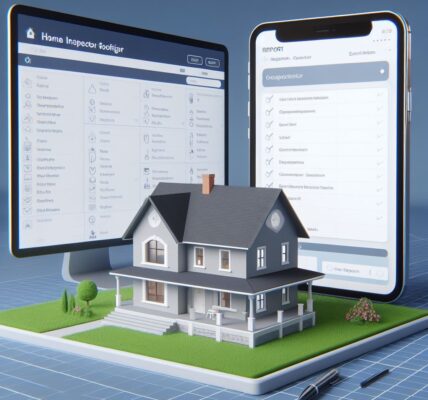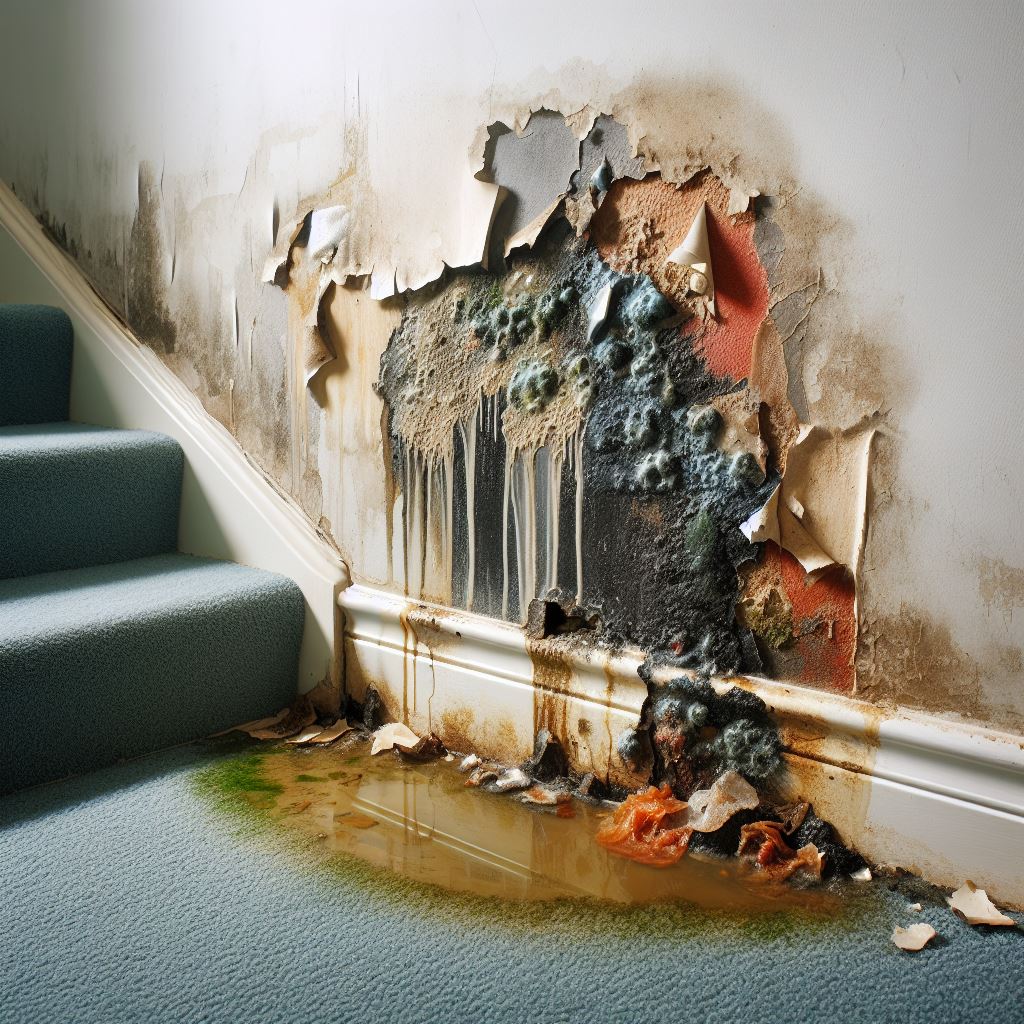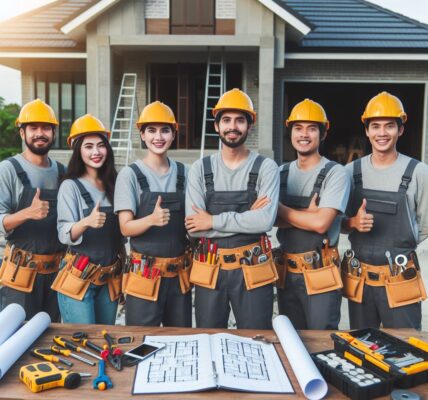Top 5 Must-Have Tools for Effective Roof Inspection
A roof is one of the most important components of a building, providing protection from the elements and ensuring the structural integrity of the entire structure. Regular roof inspections are crucial to identify any potential issues and prevent costly repairs or replacements. To conduct an effective roof inspection, it is essential to have the right tools at your disposal. In this article, we will discuss the top five must-have tools for effective roof inspection.

The first tool that every roof inspector should have is a ladder. A sturdy and reliable ladder is necessary to access the roof safely. It is important to choose a ladder that is the appropriate height for the building and can support the weight of the inspector and any equipment they may be carrying. Additionally, the ladder should be equipped with non-slip feet to ensure stability during the inspection.
Once on the roof, a moisture meter is an invaluable tool for detecting any water damage or leaks. This handheld device measures the moisture content of various materials, such as wood or insulation, by using electrical resistance. By identifying areas with high moisture levels, inspectors can pinpoint potential problem areas and take appropriate action to prevent further damage.
Another essential tool for roof inspection is a pair of binoculars. Binoculars allow inspectors to closely examine the roof from a safe distance, especially for larger or taller buildings. With the ability to zoom in and focus on specific areas, inspectors can identify any signs of damage, such as missing or damaged shingles, cracks, or sagging areas. Binoculars also enable inspectors to assess the overall condition of the roof without the need for physical contact.
To thoroughly inspect the roof, a flashlight is indispensable. This tool allows inspectors to illuminate dark or hard-to-reach areas, such as attics or crawl spaces, where potential issues may be hidden. By shining a light on these areas, inspectors can identify any signs of water damage, mold, or pests that could compromise the integrity of the roof. A flashlight with a strong beam and adjustable focus is recommended for optimal visibility during inspections.
Lastly, a camera is an essential tool for documenting the condition of the roof. Whether it is a digital camera or a smartphone with a high-resolution camera, having the ability to capture clear and detailed images is crucial for record-keeping and future reference. Photographs can be used to document any existing damage, track the progress of repairs or maintenance, and provide evidence for insurance claims if necessary. Inspectors should ensure that they have enough memory storage and backup options to store and organize the images effectively.
In conclusion, conducting an effective roof inspection requires the use of specific tools to ensure a thorough assessment of the roof’s condition. A ladder is necessary for safe access to the roof, while a moisture meter helps identify areas with high moisture content. Binoculars allow inspectors to closely examine the roof from a distance, and a flashlight illuminates hard-to-reach areas. Lastly, a camera is essential for documenting the condition of the roof. By having these top five must-have tools for effective roof inspection, inspectors can identify any potential issues and take appropriate action to maintain the integrity of the roof and the overall structure.
Essential Equipment for a Thorough Roof Inspection
A thorough roof inspection is essential for maintaining the integrity of a building and ensuring the safety of its occupants. To conduct a comprehensive inspection, it is crucial to have the right tools at hand. This article will discuss the essential equipment needed for a thorough roof inspection.
One of the most important tools for a roof inspection is a ladder. A sturdy and reliable ladder is necessary to access the roof safely. It is recommended to use a ladder with adjustable legs to ensure stability on uneven surfaces. Additionally, a ladder with rubber feet can provide better traction and prevent slipping.

Once on the roof, a tape measure is an indispensable tool. It allows the inspector to accurately measure the dimensions of the roof, including its length, width, and slope. This information is crucial for determining the amount of materials needed for repairs or replacements.
A moisture meter is another essential tool for a roof inspection. It helps identify areas of moisture intrusion, which can lead to mold growth and structural damage. By measuring the moisture content of the roof materials, the inspector can pinpoint potential problem areas and take appropriate action.
A pair of binoculars is also useful for a thorough roof inspection. It allows the inspector to examine the roof from a distance, especially for larger buildings or roofs with difficult access. Binoculars can help identify any visible signs of damage, such as missing or damaged shingles, without the need to physically climb onto the roof.
To inspect the roof up close, a flashlight is necessary, especially in areas with limited lighting. A flashlight helps the inspector identify any cracks, leaks, or other signs of damage that may not be visible under normal lighting conditions. It is recommended to use a flashlight with a strong beam and adjustable focus for better visibility.
A camera or smartphone with a high-resolution camera is also an essential tool for a roof inspection. It allows the inspector to document any visible signs of damage or areas of concern. These photographs can serve as evidence for insurance claims or as a reference for future inspections.
In addition to these tools, a roofing hammer or pry bar is necessary for inspecting the roof’s surface. It helps the inspector lift and remove shingles or other roofing materials to examine the underlying layers. This is particularly important for identifying any hidden damage or weak spots that may not be visible from the surface.
Lastly, a personal protective equipment (PPE) kit is crucial for ensuring the safety of the inspector during a roof inspection. This kit should include items such as a hard hat, safety goggles, gloves, and non-slip footwear. These protective gears help prevent injuries from falling debris, sharp objects, or slippery surfaces.
In conclusion, a thorough roof inspection requires the use of essential tools and equipment. A ladder, tape measure, moisture meter, binoculars, flashlight, camera, roofing hammer or pry bar, and personal protective equipment are all necessary for a comprehensive inspection. By having these tools at hand, inspectors can identify any potential issues and take appropriate measures to maintain the integrity of the roof and ensure the safety of the building and its occupants.
The Importance of Proper Tools in Roof Inspection: A Comprehensive Guide
The Importance of Proper Tools in Roof Inspection: A Comprehensive Guide
Roof inspection is a crucial aspect of maintaining the structural integrity of a building. It helps identify potential issues and allows for timely repairs, preventing further damage and costly repairs in the future. However, conducting a thorough and accurate roof inspection requires the use of proper tools. In this comprehensive guide, we will discuss the essential tools needed for a successful roof inspection.
One of the most basic tools needed for roof inspection is a ladder. A sturdy and reliable ladder is essential for accessing the roof safely. It should be tall enough to reach the roof comfortably and have non-slip feet to ensure stability. Additionally, a ladder standoff can be used to provide extra stability and prevent damage to the gutters.
Once on the roof, a tape measure becomes an indispensable tool. It allows for accurate measurements of various components, such as the length and width of the roof, as well as the distance between different features. This information is crucial for determining the amount of materials needed for repairs or replacements.

A moisture meter is another essential tool for roof inspection. It helps detect the presence of moisture, which can indicate leaks or water damage. By identifying these issues early on, necessary repairs can be made to prevent further deterioration of the roof structure.
To inspect the condition of the roof shingles, a pair of binoculars can be used. They allow for a closer look at the shingles without the need to physically walk on the roof. This is particularly useful for steep or fragile roofs where walking may cause damage.
A roofing hammer is a versatile tool that should be included in any roof inspector’s toolkit. It is used for a variety of tasks, such as removing and replacing damaged shingles, as well as testing the integrity of the roof by tapping on different areas. A roofing hammer with a magnetic head is especially useful for picking up nails and other metal debris.
In addition to a roofing hammer, a pry bar is also essential for roof inspection. It is used to lift and remove shingles, flashing, and other roofing components for closer examination. A pry bar with a comfortable grip and a sturdy construction is recommended to ensure ease of use and durability.
To inspect the roof from the inside, a flashlight is necessary. It helps illuminate dark areas and allows for a closer examination of the roof structure, such as the attic and ceiling. A flashlight with a strong beam and long battery life is ideal for this purpose.
Lastly, a digital camera or a smartphone with a high-resolution camera is a valuable tool for documenting the roof inspection. It allows for clear and detailed photographs of any issues or areas of concern. These photographs can be used for reference during repairs or as evidence for insurance claims.
In conclusion, proper tools are essential for conducting a thorough and accurate roof inspection. From a sturdy ladder to a moisture meter, each tool serves a specific purpose in identifying potential issues and ensuring the structural integrity of the roof. By investing in the right tools and using them correctly, roof inspectors can provide valuable insights and recommendations for maintaining and repairing roofs effectively.




